




| Lasius emarginatus (Olivier, 1792) |





|
|
Scientific name: Lasius emarginatus (Olivier, 1792) Common name: French name: Order: Hymenoptera Family: Formicidae Wingspan : Females: 7-10 mm; Males: 7-14.5 mm; Workers: 3-5.5 mm. Biotope: Rocky places, old walls, calcareous slopes, in the vicinity of plants where they take care of aphids. The nest may be located in the soil or under rocks. These ants may also enter into human buildings. Geographic area: Western temperate part of the Palaearctic region, Europe north to Belgium, the Caucasus, Asia Minor. Observation period : All year round. The activity is reduced during the winter months (diapause). Workers can live 3 years, the queen 30 years. |
Workers of the Lasius emarginatus species show a reddish yellow thorax and petiole contrasting with a very dark reddish brown head and gaster. The petiole is made of a single part. The head is wide and the thorax is narrowed in the middle. There are short and oblique hairs on the scapes and on the tibias. There is a possible confusion with Lasius brunneus but this last species shows a lighter coloured head and gaster. Lasius emarginatus takes care of aphids to collect honeydew. It also feeds on small insects. |
| [To know more about the Lasius emarginatus] [Next picture] [Top] |
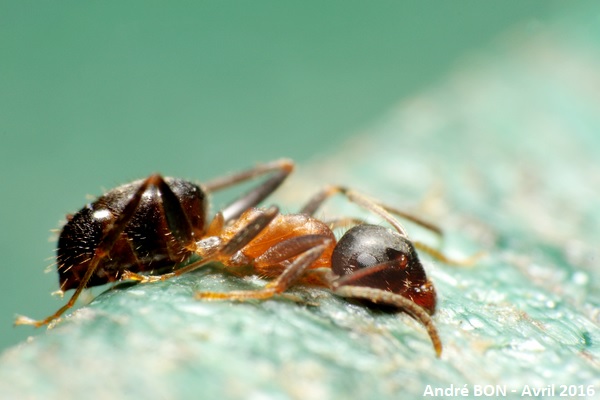
|
I am using reverse mounted 24mm lenses for photos with a very important magnification. The depth of field is very very short and you need a totally immobile subject to position the focus at the right place. Any part that is a little distant from the eye which is sharp, gets a little blurred. |
| [To know more about the Lasius emarginatus] [Next picture] [Previous picture] [Top] |
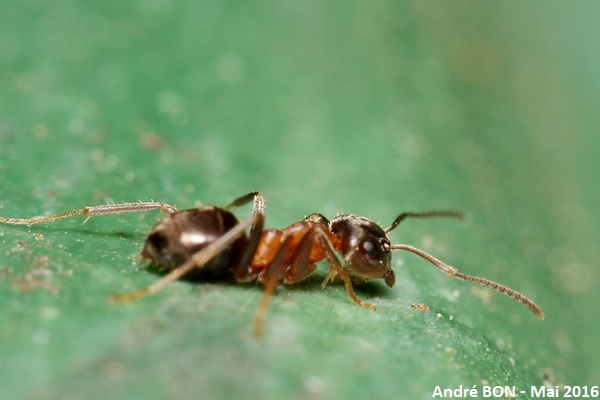
|
Several shots with a small focus gap could help doing "photo stacking" in order to get a greater depth of field. It is however quite difficult with living insects. |
| [To know more about the Lasius emarginatus] [Next picture] [Previous picture] [Top] |
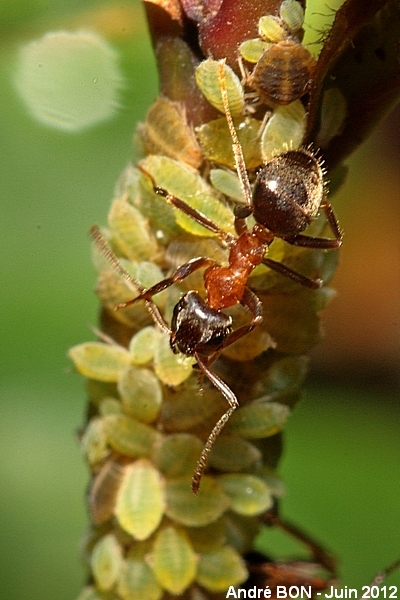
|
Colours and shape match the Lasius emarginatus species. The pictures is not very sharp but it seems to me that we can see some short hairs on the edges of the scape. You need also to take into account that they take care of aphids. |
| [To know more about the Lasius emarginatus] [Next picture] [Previous picture] [Top] |
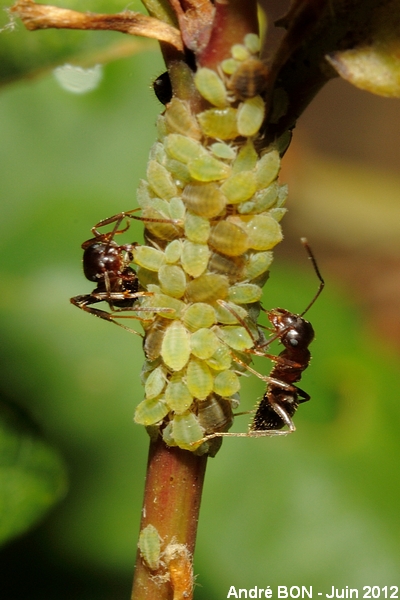
|
Here are two workers in charge of collecting honeydew. |
| [To know more about the Lasius emarginatus] [Previous picture] [Top] |
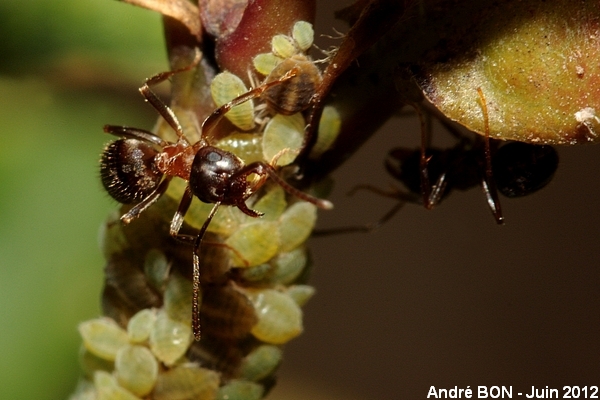
|
I think that this one is a major worker in charge of protecting the colony of aphids. There are also many ladybirds in my garden. |